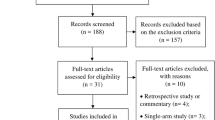Abstract
Anticoagulant prophylaxis for preventing venous thromboembolism (VTE) is a worldwide established procedure in hip and knee replacement surgery. Despite available anticoagulant prophylaxis, patients who undergo total knee arthroplasty (TKA) have a high incidence of venous VTE. In spite of their proven efficacy, the currently available anticoagulants have limitations that driven to develop new oral agents that directly target specific factors in the coagulation cascade, such as direct thrombin inhibitors and direct Factor Xa inhibitors, in an attempt to overcome some of the drawbacks with the traditional agents. Apixaban is a potent, selective direct inhibitor of the coagulation factor Xa, recently approved in Europe for the prevention of venous thromboembolism (VTE) in adult patients after total hip replacement (THR) or total knee replacement (TKR) surgery. Apixaban has been extensively studied worldwide in about 12,000 patients in four clinical studies that have demonstrated the efficacy and safety of apixaban respect to enoxaparin for the prevention of thromboembolism after major orthopedic surgery. Three of these trials involved 7,337 patients who undergo TKR: one phase II trial (APROPOS Study) and two large phase III trials (ADVANCE 1 and ADVANCE 2 Studies). ADVANCE 1 demonstrated that when compared with enoxaparin 30 mg twice daily for efficacy, apixaban did not meet the prespecified statistical criteria for noninferiority, but its use was associated with lower rates of clinically relevant bleeding. ADVANCE 2 showed that apixaban was superior to the European standard dose of enoxaparin of 40 mg once daily in term of efficacy, with a similar incidence of major bleeding. This review focuses the clinical efficacy and tolerability of oral apixaban for the prevention of VTE in adult patients following TKR surgery.



Similar content being viewed by others
References
Geerts WH, Bergqvist D, Pineo GF et al (2008) Prevention of venous thromboembolism: American College of Chest Physicians evidence-based clinical practice guidelines (8th edn). Chest 133:381S–453S
Randelli F, Biggi G, Della Rocca G et al (2011) Italian intersociety consensus statement on antithrombotic prophylaxis in hip and knee replacement and in femoral neck fracture surgery. J Orthop Traumatol 12:69–76
NICE clinical guideline (2010). Reducing the risk of venous thromboembolism (deep vein thrombosis and pulmonary embolism) in patients admitted to hospital. www.nice.org.uk/guidance/CG92
Becattini C, Lignani A, Agnelli G (2010) New anticoagulants for the prevention of venous thromboembolism. Drug Des Dev Ther 4:49–60
Luettgen JM (2006) In vitro evaluation of apixaban, a novel, potent, selective and orally bioavailable factor Xa inhibitor. Blood 108(11):4130 (ASH Annual Meeting Abstracts)
Jiang X (2009) Apixaban, an oral direct factor Xa inhibitor, inhibits human clot-bound factor Xa activity in vitro. Thromb Haemost 101(4):780–782
Raghavan N (2009) Apixaban metabolism and pharmacokinetics after oral administration to humans. Drug Metab Dispos 37(1):74–81
Lassen MR (2007) The efficacy and safety of apixaban, an oral, direct factor Xa inhibitor, as thromboprophylaxis in patients following total knee replacement. J Thromb Haemost 5(12):2368–2375
Jiahao H, Cao Y, Liao C et al (2011) Apixaban versus enoxaparin in patients with total knee arthroplasty. A meta-analysis of randomised trials. Thromb Haemost 105:245–253
Roser-Jones C, Becker R (2010) Apixaban: an emerging oral factor Xa inhibitor. J Thromb Thrombolysis 29:141–146
Galanis T, Thomson L, Palladino M, Merli G (2011) New oral anticoagulants. J Thromb Thrombolysis 31:310–320
Lassen MR (2009) Apixaban or enoxaparin for thromboprophylaxis after knee replacement. N Engl J Med 361(6):594–604
Lassen MR, Raskob GE, Gallus A et al (2010) Apixaban versus enoxaparin for thromboprophylaxis after knee replacement (ADVANCE-2): a randomised double-blind trial. Lancet 375:807–815
Author information
Authors and Affiliations
Corresponding author
Rights and permissions
About this article
Cite this article
Imberti, D., Gallerani, M. & Manfredini, R. Therapeutic potential of apixaban in the prevention of venous thromboembolism in patients undergoing total knee replacement surgery. J Thromb Thrombolysis 34, 208–213 (2012). https://doi.org/10.1007/s11239-012-0716-8
Published:
Issue Date:
DOI: https://doi.org/10.1007/s11239-012-0716-8




